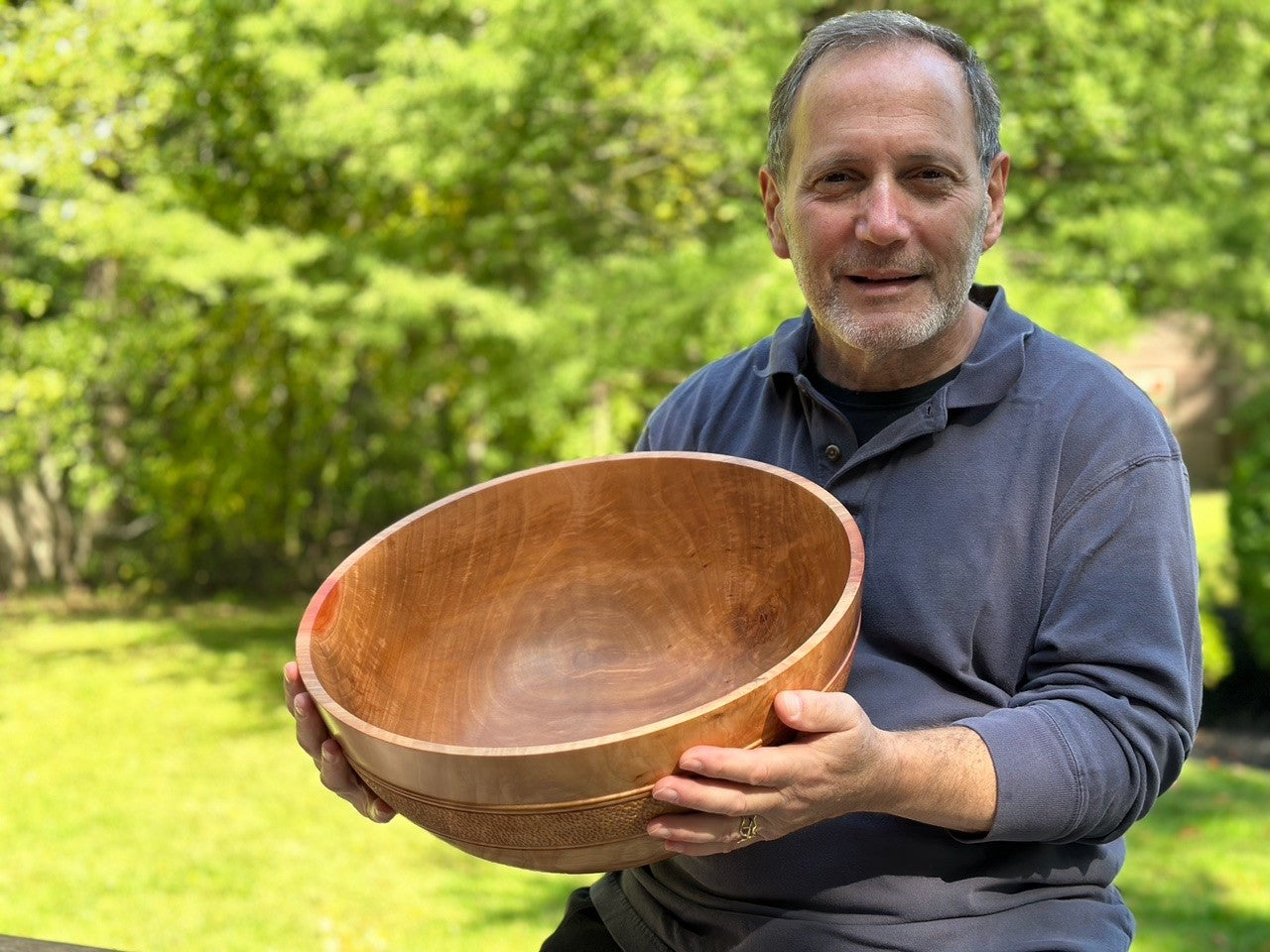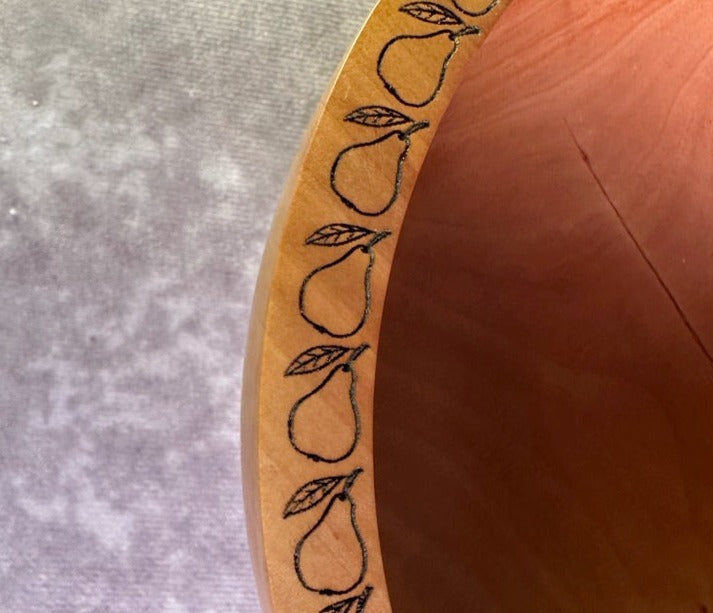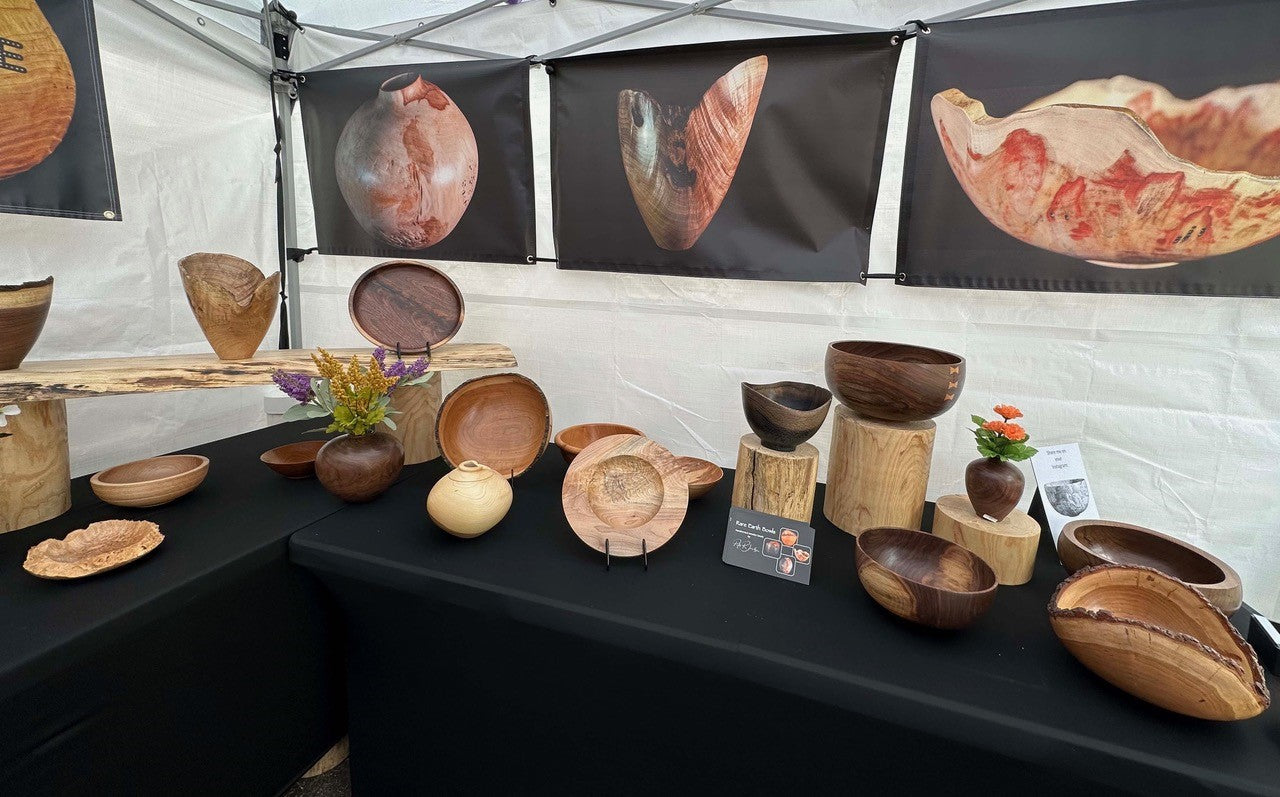Peter Jacobson
Hi! My name is Peter Jacobson and I work from my studio in Dresher, PA.

I grew up in a home where natural
materials were revered, handcrafts were ubiquitous, and creativity was
constantly encouraged and celebrated. My Mom, a sculptor and proprietor of a local craft gallery, and my Dad, a potter (when he wasn’t a dentist) filled their home with art, Nakashima furniture, and bountiful examples from the contemporary crafts movement of the 1970s and 80s. With little formal arts training, however, my early attempts at any sort of handcrafts were clunky, at best. Instead, I gravitated to the sciences; following college I enjoyed a 43+ year career as a geologist.
The creative influence from my parents lay largely dormant until my semi-retirement in 2020, which suddenly gave me more time and energy to explore a new avocation. After a 3-hour turning class at a local woodworking cooperative, I learned that I inherited from my grandfather his love of wood turning, from my father a passion for making beautiful round things, and from my mom a spirit of stretching oneself creatively. I quickly became obsessed with learning all I could about turning and I spent the bulk of the pandemic lock-down time turning during the day and reading and watching videos in the evening. I soaked it all up, learning about tools, techniques, wood, finishes, sharpening, design and more. As I was turning, I would often imagine that the expert from last night’s video was watching over my shoulder, giving me guidance and occasionally asking me “why did you do that?”

“I love the sound of chainsaws in the morning,” is one of my favorite sayings when it comes to sourcing wood for turning. I find all my wood mostly from right around where I live in southeastern Pennsylvania, where native hardwoods are abundant. Many of my friends and neighbors are part of my “bowl patrol” alerting me to a nearby tree coming down or wood piled up on the curb.
I make my bowls with a goal of creating objects that are pleasing forms, whether the bowl is used for utilitarian purposes or as a decorative item. Bringing out the natural beauty of the wood, its color, grain patterns, and textures is a critical aspect of bowl design. Likewise, the shape of the bowl – overall form, size, features, embellishments, textures – are equally critical to creating a successful piece. With hollow forms (closed vessels with top openings that are smaller than the largest diameter) the shape of the form is not constrained by any functional implications.

